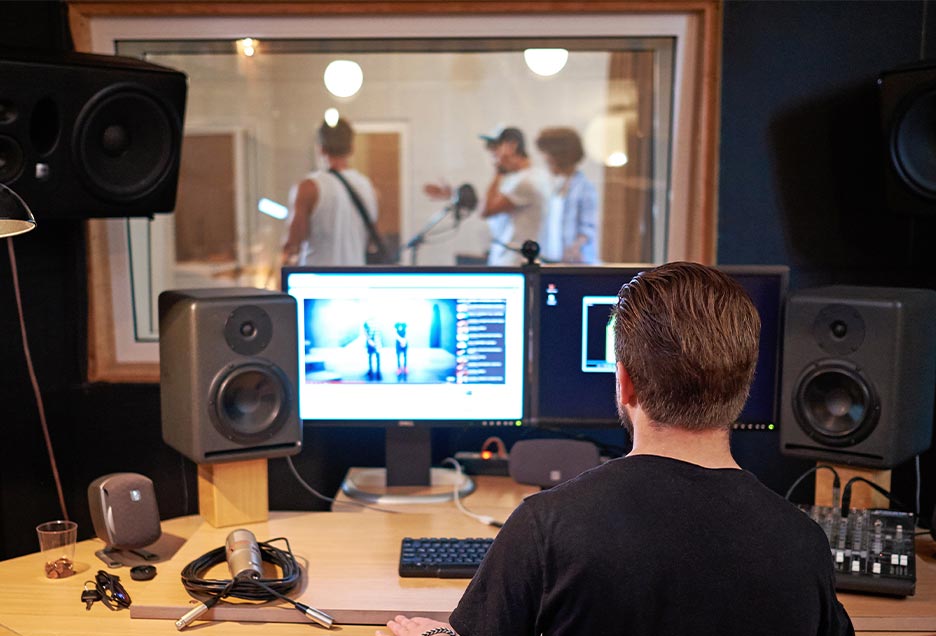In Part 1 of this series we discussed smaller, entry-level interfaces, their benefit in the classroom and the options available. Most of these interfaces are designed for either use as part of a basic computer digital audio workstation (DAW), like the ones that make up many school music ICT suites, or for portable recording where only a limited number of channels needed to be recorded.
Deciding how many audio input channels you will need is key to understanding which interface will be right for you. Of course there are also issues such as the quality of the components used and the ease of use to consider, but working out how many channels you need to record at one time is the first and most important question to answer.
If all your recording will be built up one or two channels at a time, layering on previously recorded tracks on your DAW, then you really don’t need the ability to record more than 2 channels simultaneously. A good example of this would be the home recording musician, who would only ever be recording him or herself. They might require stereo (and therefore two channels) if they wanted to preserve the stereo width of, say, a keyboard sound, or some guitar effects. But it would be very unlikely that they would want to record more than two channels at once.
Where a multi-channel interface is needed, is where you want to record more than one or two channels at the same time. For example:
- Recording a drum kit with individual microphones on each drum, and a couple also to record the cymbals together with the overall sound of the kit
- Recording a group of musicians, which might include microphones on guitar amplifiers, direct recording of synthesizers or digital pianos, vocals etc
- Recording a choir, but as well as a stereo pair of microphones, having additional microphones for piano and any soloistIn all these cases, having the extra input channels, and recording these channels onto separate tracks in your recording software (for example, Logic, Cubase or Studio One) will give you the ability to adjust the balance afterwards - to a certain extent.
Any restriction on the effectiveness of post-recording mixing will come down to how the original audio was captured, and how ‘clean’ each track ends up. If you imagine the scenario of recording a drum kit, it will be impossible to ensure that the snare microphone only picks up the snare drum: of course it will also pick up kick drum, hi-hat cymbals – in fact, probably every other part of the kit! So why bother? Well, with some careful use of tone controls and other built-in effects and plugins in the music software, it will be possible to isolate each channel enough so that some balancing and mixing will still be effective. While your original recording of the kit might be adequate, adding the compression and gate plugins to the kick drum, snare and toms will give you much more control, as well as enhancing the sound of these individual component parts.
Of course, recording a full rock band all at the same time will cause similar issues of spill, where things like the sound from guitar cabinets will inevitably end up on the singer’s microphone. But, depending on whether the singer’s voice has spilled onto other microphones, it might be possible to over-dub (record on top afterwards) just the vocal track, replacing the original recorded track with all its unwanted ‘spilled’ sounds, and at the same time maintainng the 'live' feel of the original take.

True multiple-channel interfaces really start with around 4 channels, though most schools will opt for 8 input channels as a minimum. Models such as the M-Audio AIR192X14 or the Tascam US-4X4HR offer four input channels. Looking for eight? Then try the PreSonus Studio 1824C. Remember to make sure that you have the correct type of USB connection for your computer: many of the more recent models now use the newer USB-C connection.

Go beyond 8 channels, and you will probably be looking at a digital mixer, rather than an interface per se. Some of these will give you access to record 32 or even 64 channels at the same time, which should be enough for most people! You may find our articles on Building a recording studio, or The Skinners School studio project helpful if you are thinking of this as a solution for your school studio.
And of course, if you have any questions, please do get in contact with us and we’ll be pleased to give you whatever advice you need.







